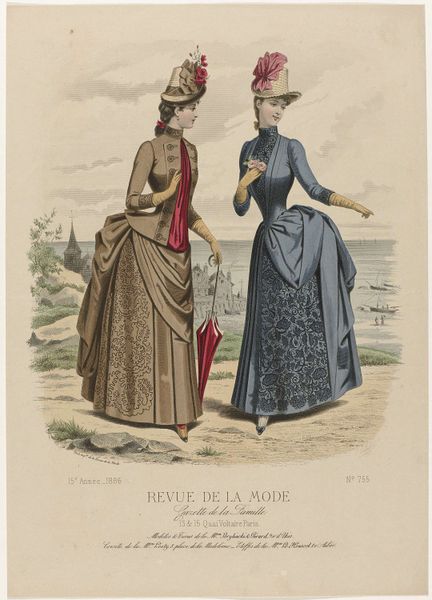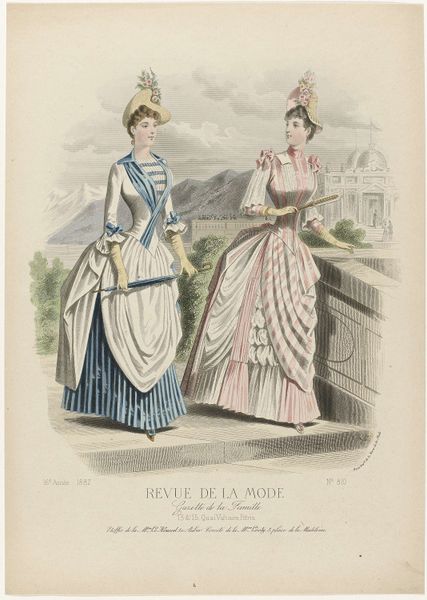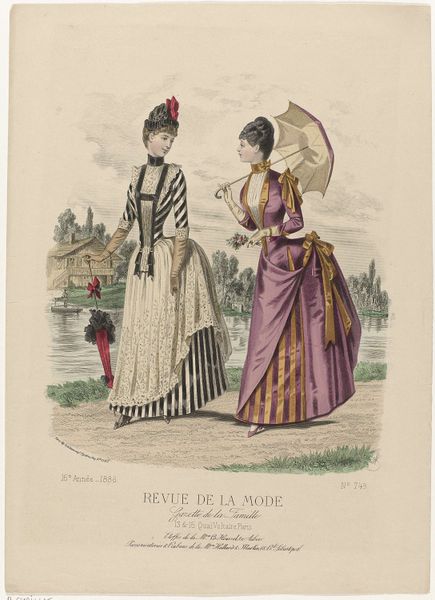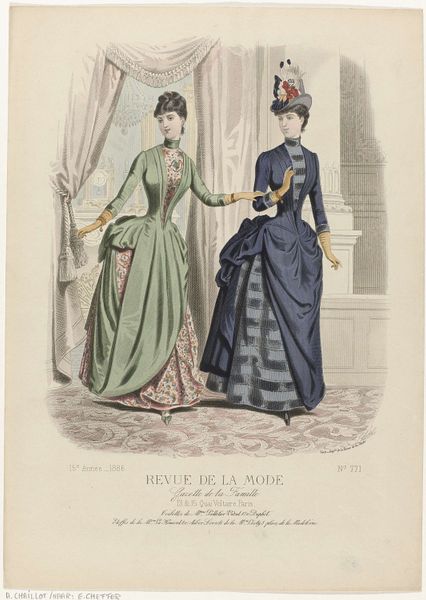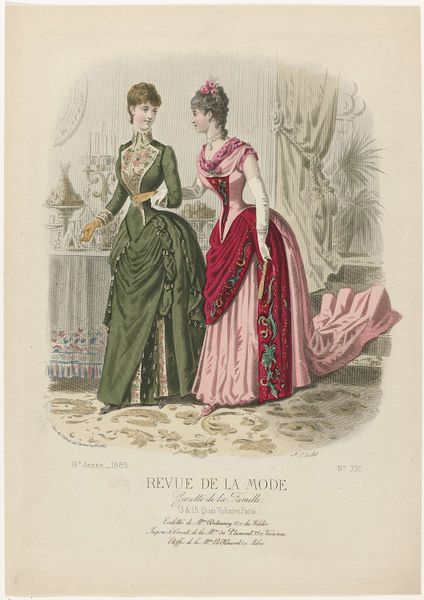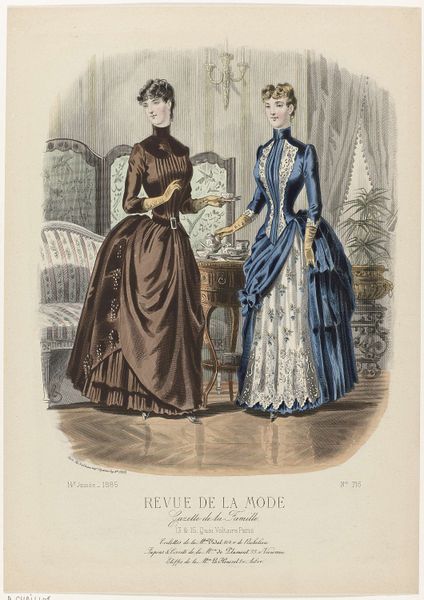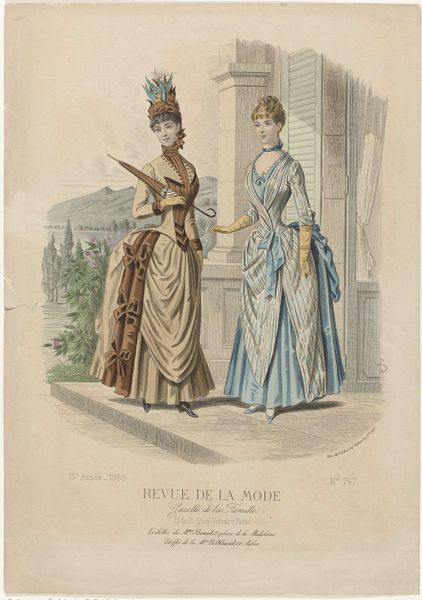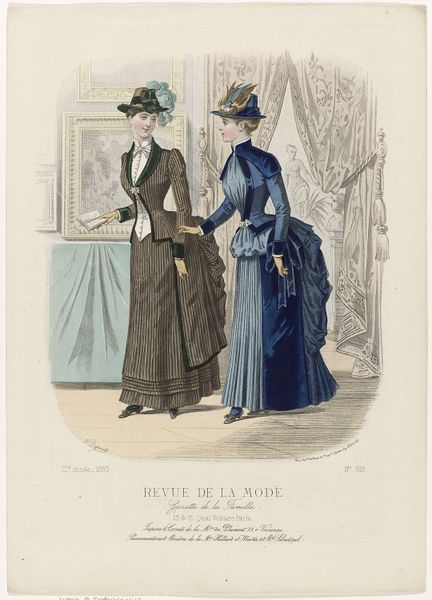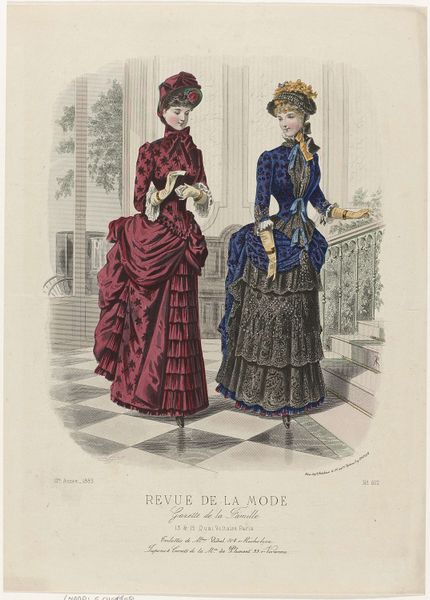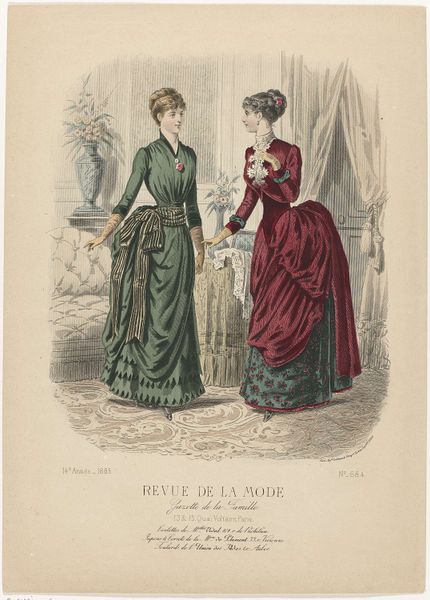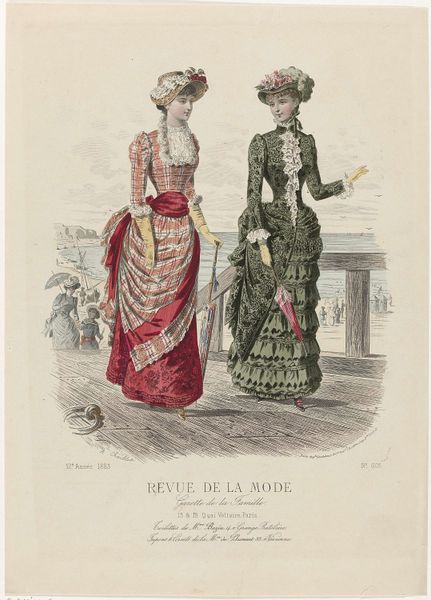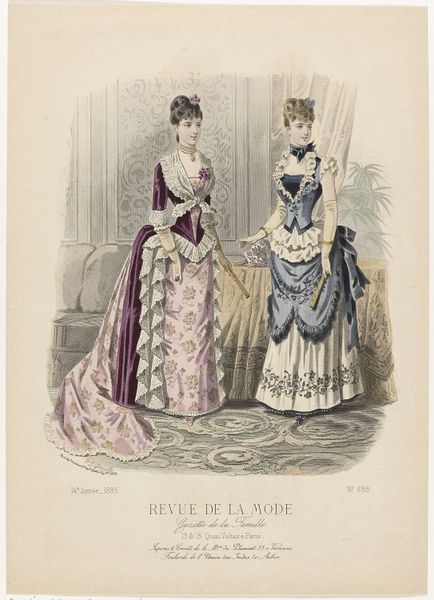
Revue de la Mode, Gazette de la Famille, dimanche 12 septembre 1886, 15e Année, No. 767: Etoffes de la M.on Le Houssel (...) 1886
0:00
0:00
lithograph, print, watercolor
#
portrait
#
lithograph
# print
#
impressionism
#
caricature
#
watercolor
#
watercolour illustration
#
genre-painting
#
decorative-art
#
dress
#
watercolor
Dimensions: height 375 mm, width 268 mm
Copyright: Rijks Museum: Open Domain
Editor: Here we have a print titled "Revue de la Mode, Gazette de la Famille" from 1886, author is anonymous. It appears to be a lithograph with watercolor, depicting two women in fashionable dresses. The detail is really impressive; you can almost feel the texture of the fabrics. How do you approach a piece like this? Curator: As a materialist, I see this as a document of production and consumption. It's not just about the aesthetics, but about the labor involved in creating these garments, and the social context of their use. The print itself, a mass-produced image, hints at the burgeoning fashion industry and its means of distribution. Consider the sourcing of materials: where did the fabrics come from? Who dyed them? Who stitched these elaborate designs? Editor: That’s a great point! I was so focused on the visual details, I didn’t consider the immense production chain. It’s easy to forget that even "fashion plates" are part of a larger economic system. So, would you say that the choice of lithography and watercolor also reflects certain economic considerations? Curator: Precisely. Lithography allowed for relatively inexpensive reproduction, making fashion accessible to a wider audience through publications like "Revue de la Mode". Watercolor adds a touch of luxury and handcraft, alluding to the bespoke nature of haute couture while simultaneously democratizing access to style trends. This tension between the unique and the mass-produced is really important to consider. Editor: So interesting! It definitely shifts my perspective on what I initially saw as just a pretty picture. It makes me consider the lives of the many unseen hands who were a part of creating these dresses and this image. Curator: Exactly. This image represents a specific point in time. Thinking about production, distribution, and the labor involved is vital to understanding its cultural weight.
Comments
No comments
Be the first to comment and join the conversation on the ultimate creative platform.
